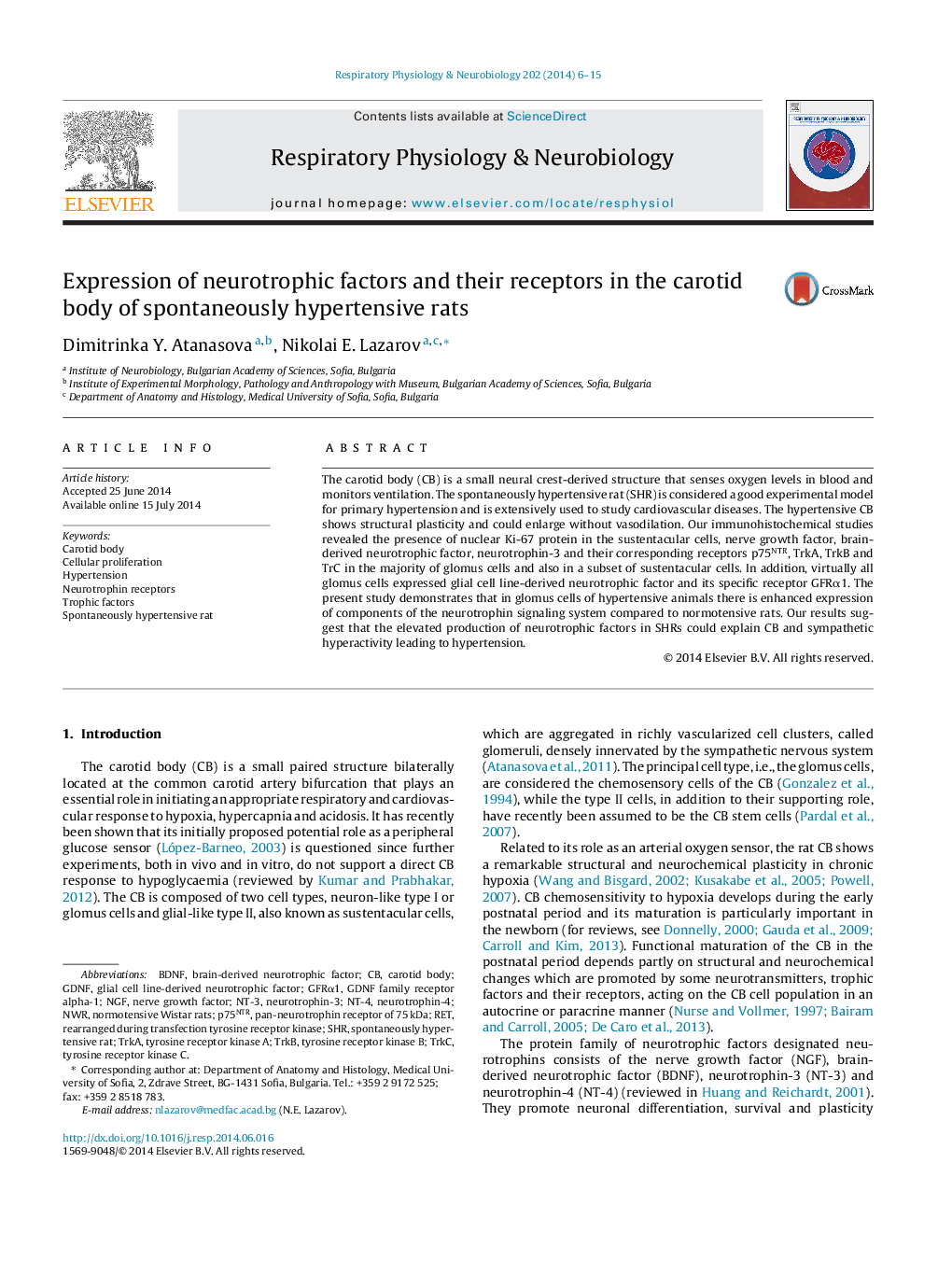| کد مقاله | کد نشریه | سال انتشار | مقاله انگلیسی | نسخه تمام متن |
|---|---|---|---|---|
| 2846904 | 1571326 | 2014 | 10 صفحه PDF | دانلود رایگان |
• The hypertensive CB undergoes morphological changes that could be ascribed to the increased sympathetic vasomotor tone under hypertensive conditions.
• The glomus cells in SHRs contain higher levels of neurotrophic factors and their receptors compared to normotensive rats.
• Neurotrophins are good candidates to explain the CB and sympathetic hyperactivity leading to hypertension.
The carotid body (CB) is a small neural crest-derived structure that senses oxygen levels in blood and monitors ventilation. The spontaneously hypertensive rat (SHR) is considered a good experimental model for primary hypertension and is extensively used to study cardiovascular diseases. The hypertensive CB shows structural plasticity and could enlarge without vasodilation. Our immunohistochemical studies revealed the presence of nuclear Ki-67 protein in the sustentacular cells, nerve growth factor, brain-derived neurotrophic factor, neurotrophin-3 and their corresponding receptors p75NTR, TrkA, TrkB and TrC in the majority of glomus cells and also in a subset of sustentacular cells. In addition, virtually all glomus cells expressed glial cell line-derived neurotrophic factor and its specific receptor GFRα1. The present study demonstrates that in glomus cells of hypertensive animals there is enhanced expression of components of the neurotrophin signaling system compared to normotensive rats. Our results suggest that the elevated production of neurotrophic factors in SHRs could explain CB and sympathetic hyperactivity leading to hypertension.
Journal: Respiratory Physiology & Neurobiology - Volume 202, 1 October 2014, Pages 6–15
